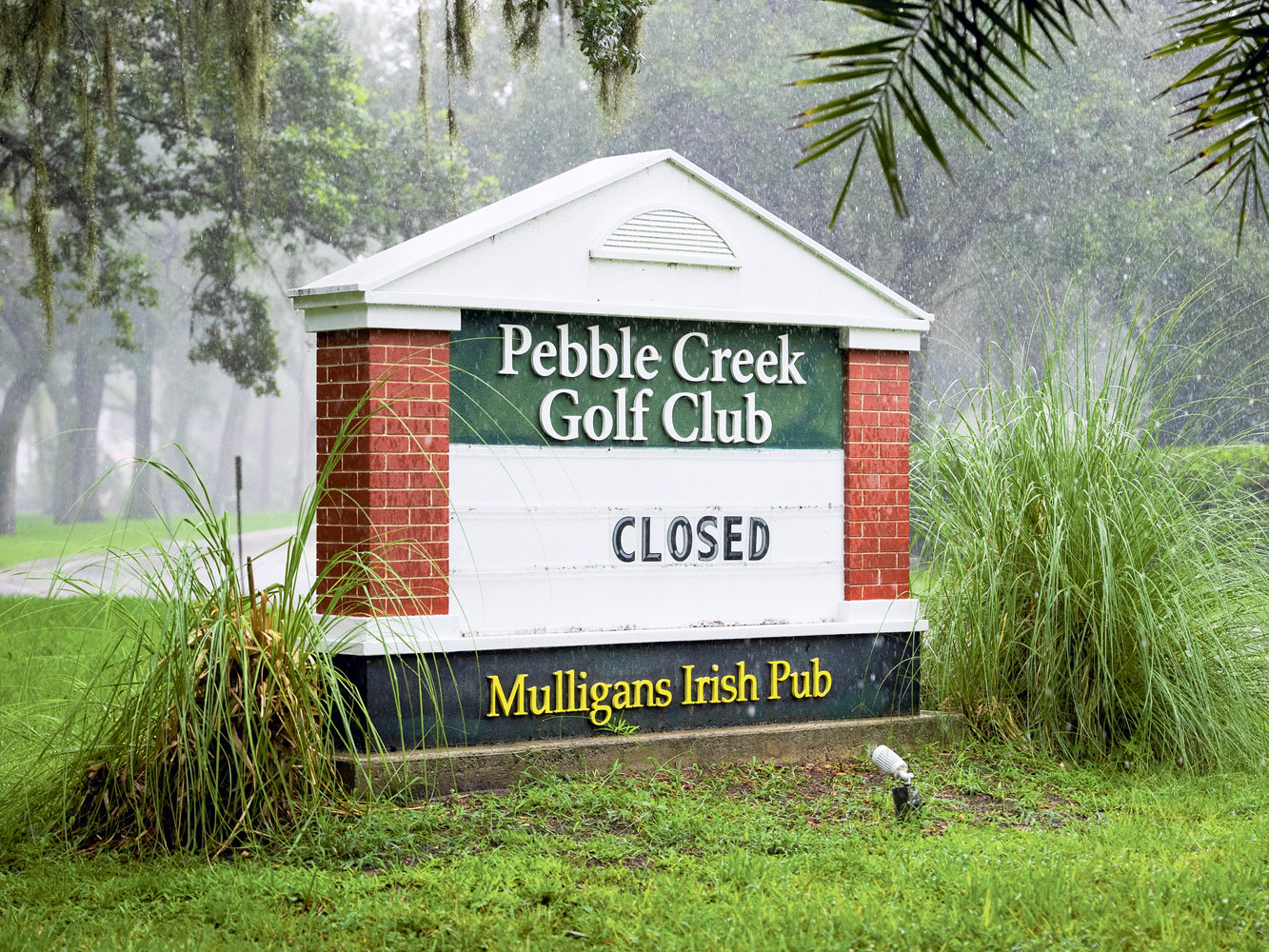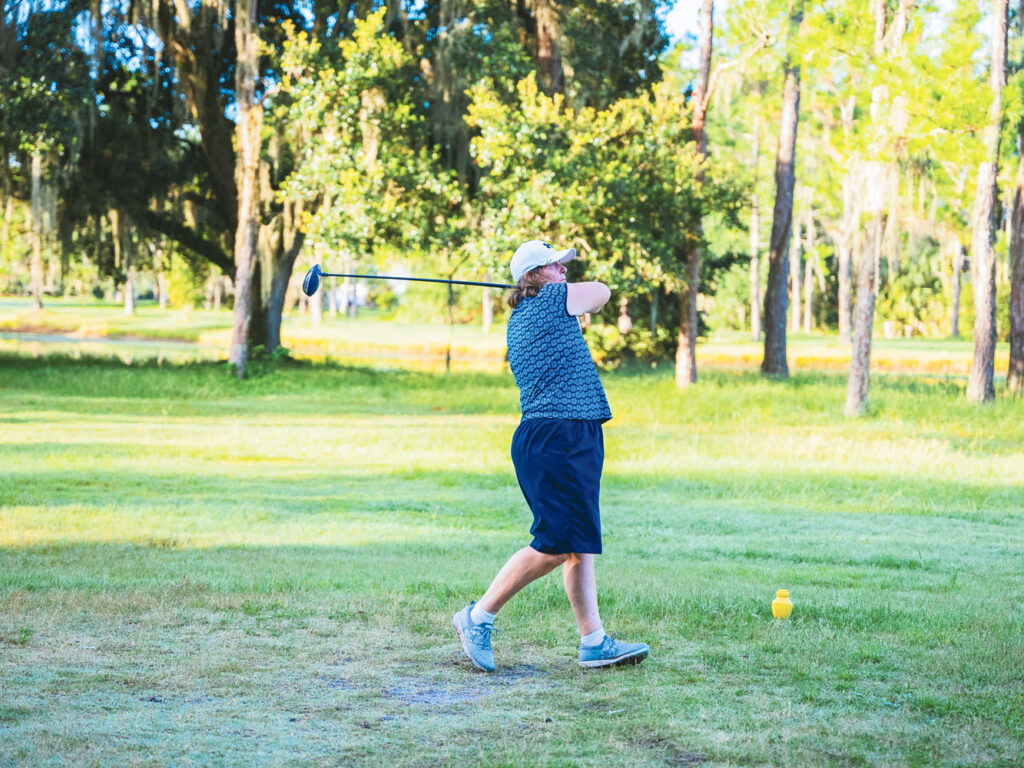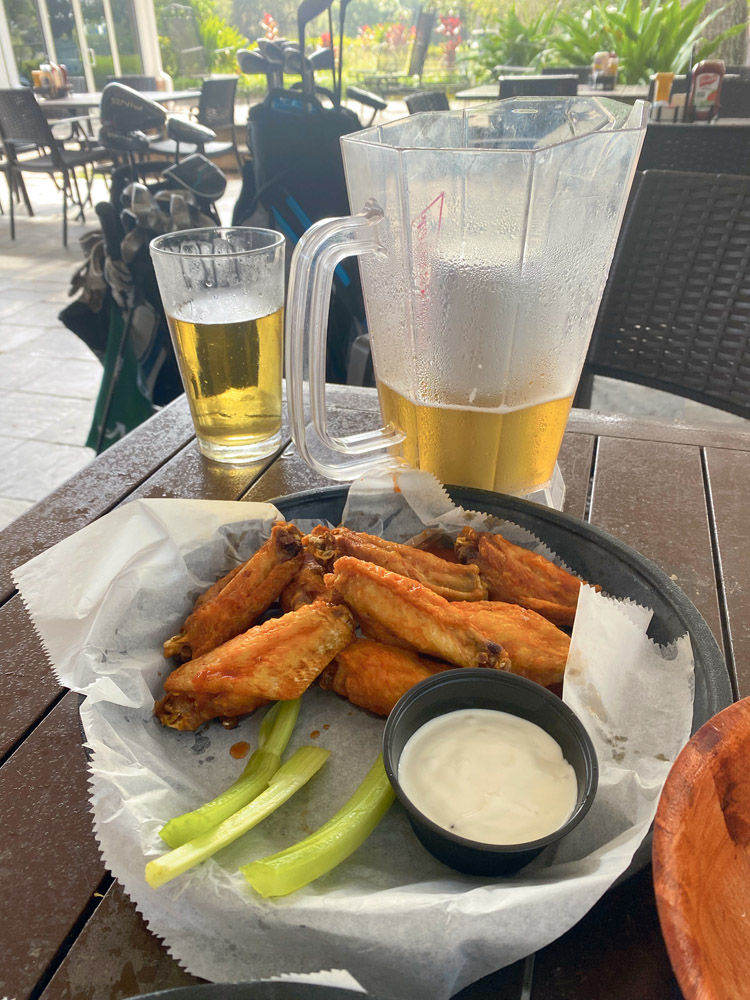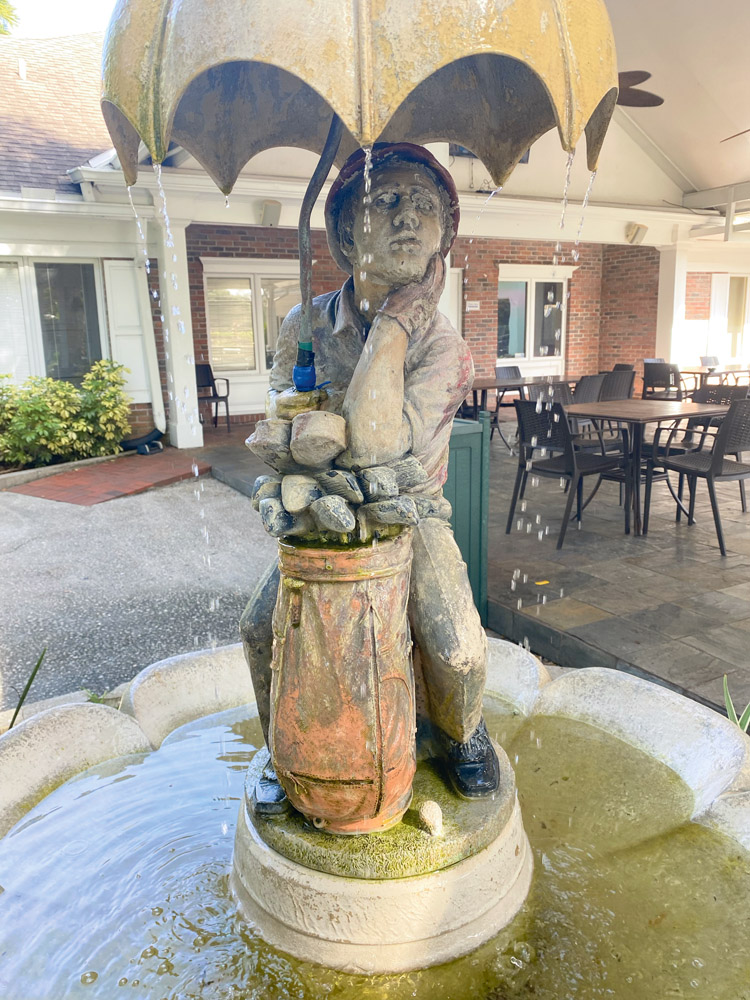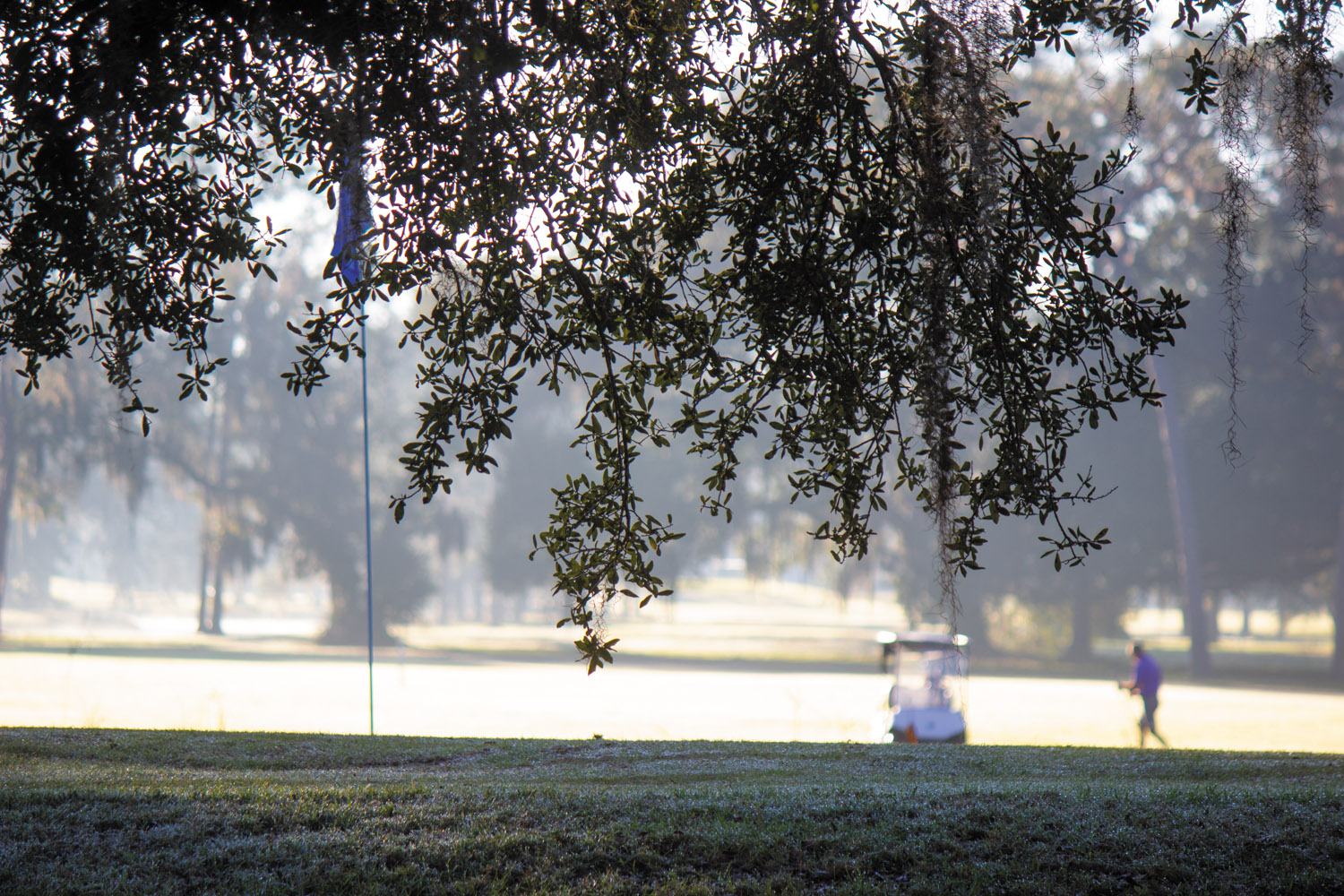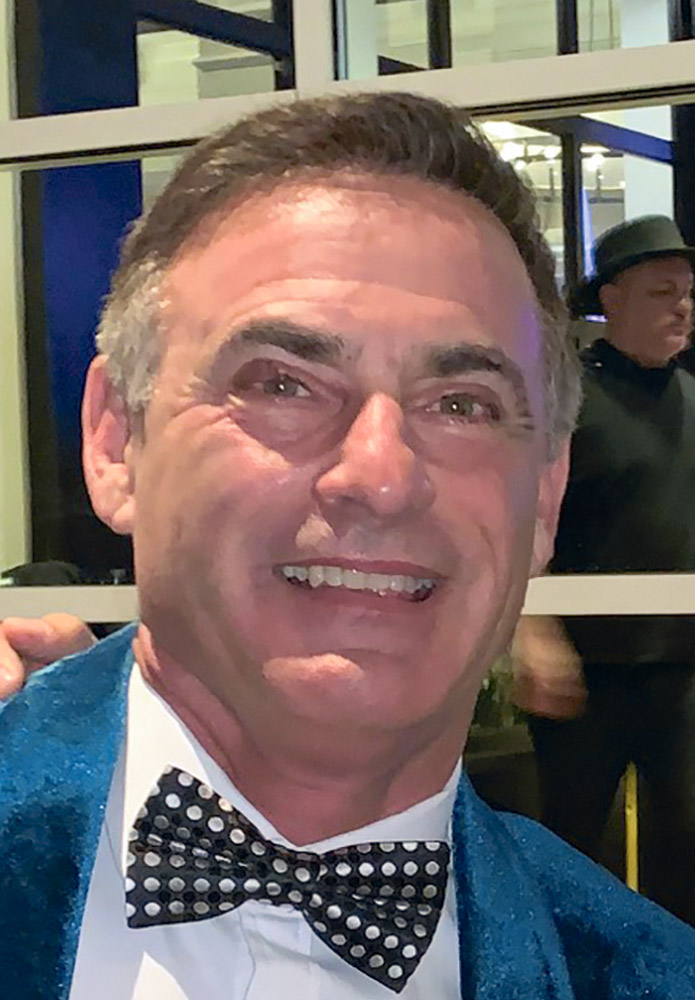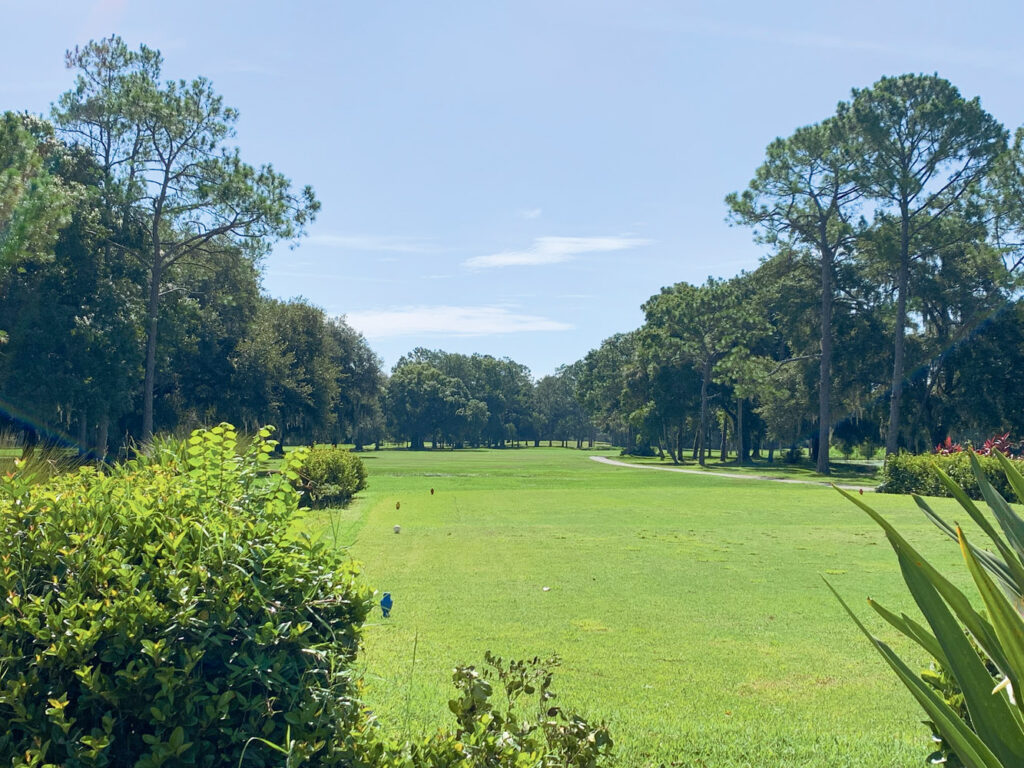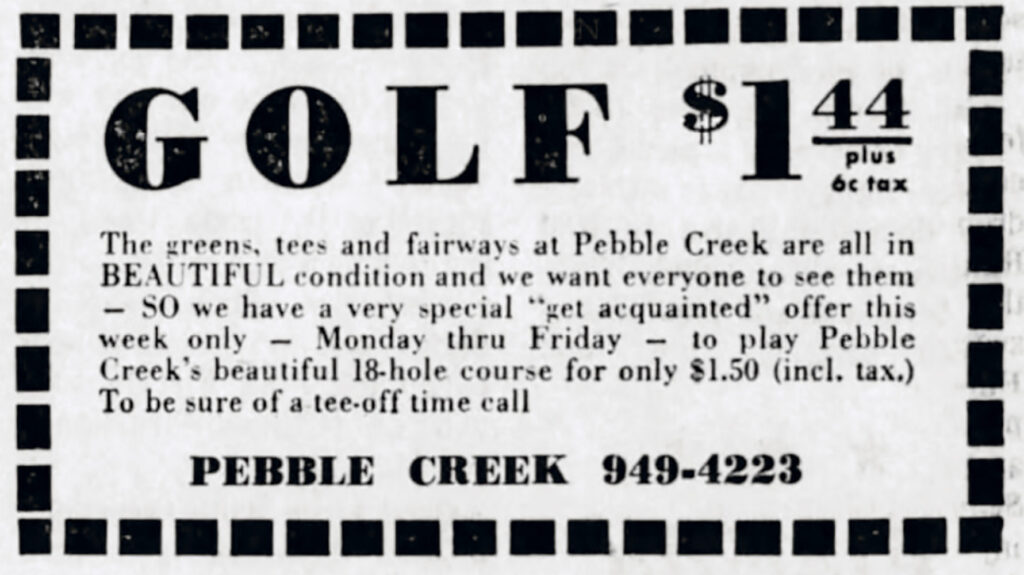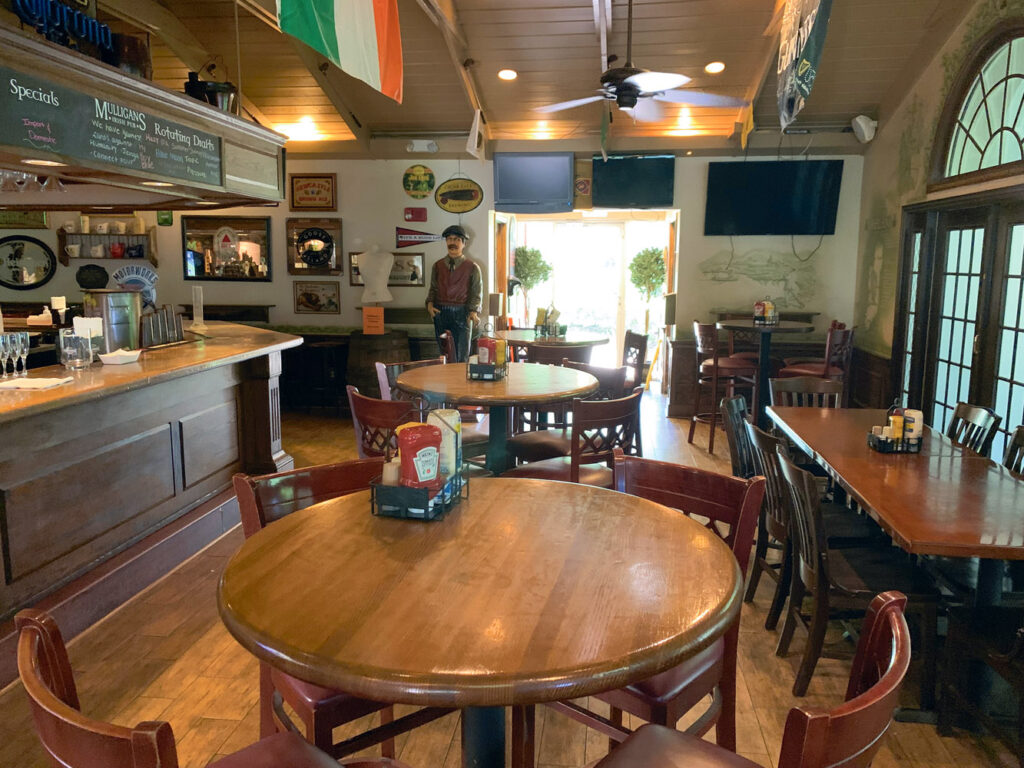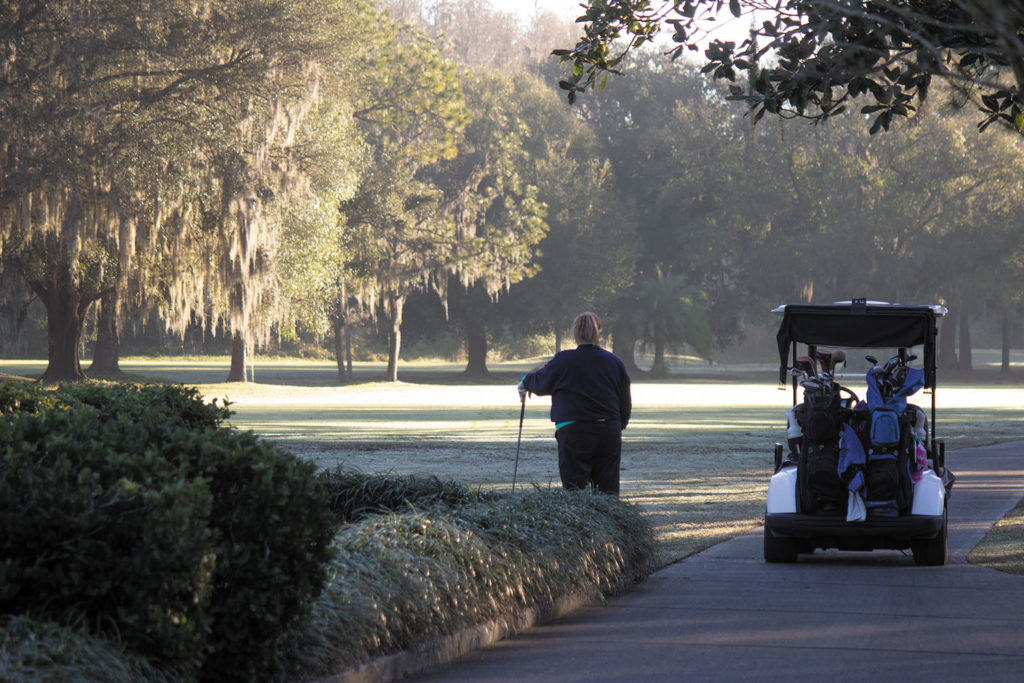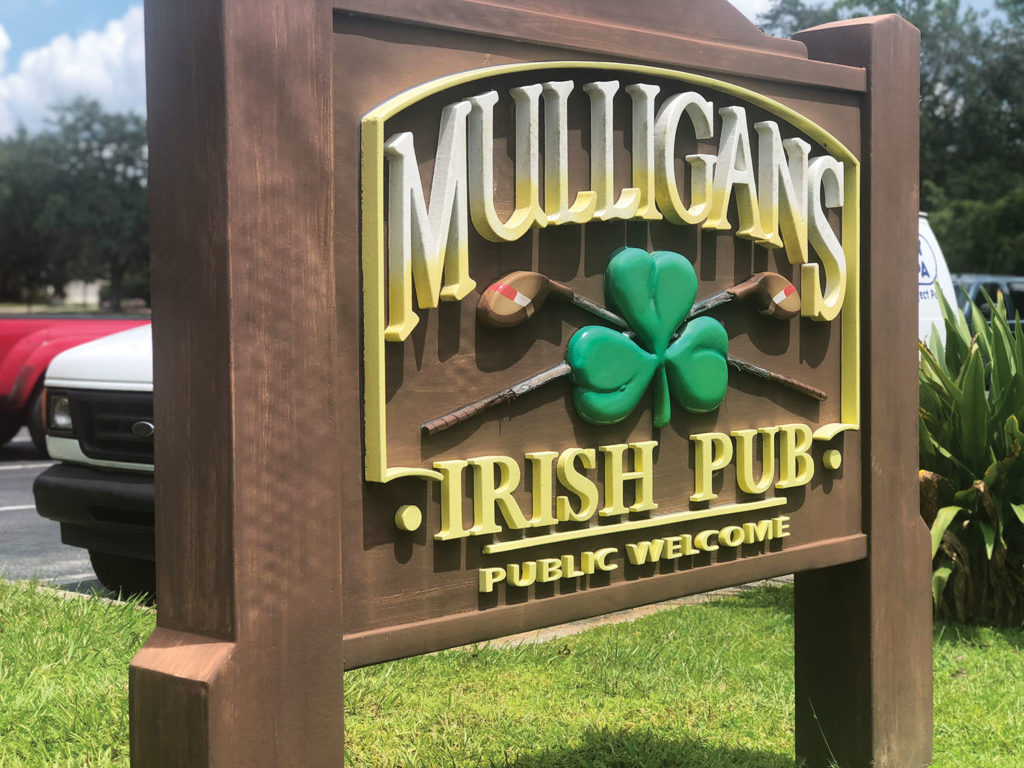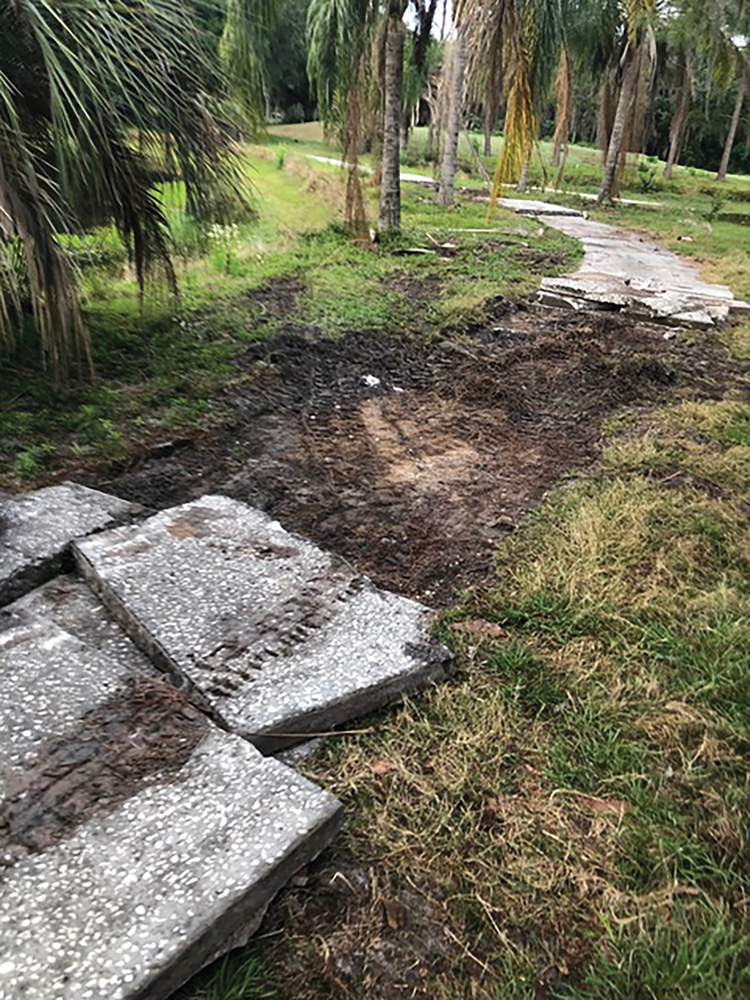
Pebble Creek Golf Club (PCGC) owner Bill Place says it’s a matter of safety.
Pebble Creek resident Paul Manobianco says it feels more like retribution.
A number of cart path areas on the sprawling golf course, which has been closed since July 31, 2021, as Place has been seeking a developer to convert the fairways and greens into homes, have been fork-lifted off the ground and piled onto the remaining path. Bright orange spray paint directs people away from the mess.
Several Pebble Creek residents are complaining that Place is purposely tearing up the golf course so they will stop walking and biking on it. And, they’re not necessarily wrong.
“I received calls from residents, saying they are constantly seeing ATVs running around the property, motorcycles, bikes, people walking around the property,” Place says. “It’s a huge issue because I remain liable for that.”
So, Place says he set out to stop it. PCGC is private property, not a public park, he says. He alerted both of Pebble Creek’s Homeowners Associations in a March 26 email that he had contacted the Hillsborough County Sheriff’s Office about beefing up their presence at the shuttered course to keep trespassers off and was looking into “removing portions of the cart paths to discourage their use.”
On April 2, in another email, he announced that the cart path removals would begin April 5.
“Slabs of the cart paths were lifted and placed on the existing cart paths every 100-300 feet,” Place says. “We did it in such a way that if, down the road, a solution to keep the golf course or if the county wants to buy it as a park, the sections can be lifted back up and put back in place.”
But, residents like Manobianco aren’t happy. Considering the difficulty Place has had securing a brownfield designation and developers in the face of resident resistance, as well as the recent lawsuit filed against Pebble Creek resident and activist Leslie Green (see story on pg. 4), this has all the makings of a payback.
“He wants Pebble Creek residents to pay for the denial of the brownfield, for fighting the rezoning, for Leslie for speaking up and for developers walking away,” says Manobianco, who lives in one of the 130 homes located on the golf course.
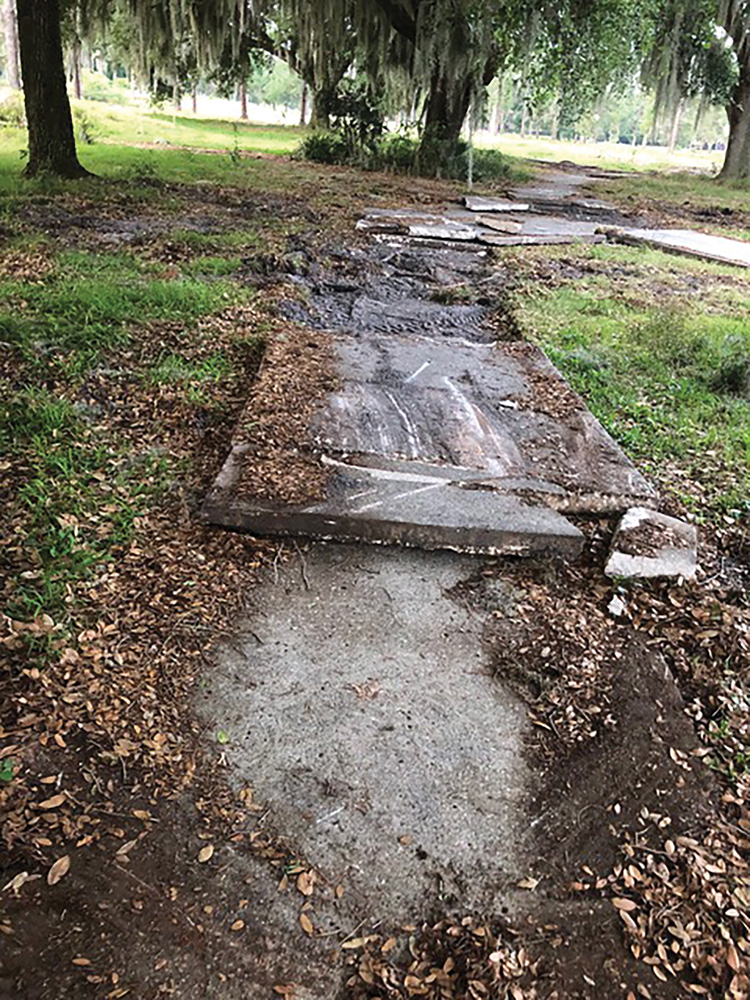
Mary Lou Tucker says that even when the golf course was open, residents would enjoy leisurely walks and bike rides on the course in the early morning or after the golfers had finished for the day. For those who lived on or near the course but didn’t play, it was a nice community amenity.
“I fail to see the logic behind the recent actions undertaken on our course,” Tucker says. “I cannot understand the reasoning behind spending money to destroy one’s own property needlessly… and antagonize the residents in the process.”
Tucker says walks on the golf course have been a way of life for Pebble Creek residents for decades.
“I have lived here on the course for 20 years and cannot remember ever being prohibited from taking advantage of a safe, and silent path for walking or riding a bike,” she says. “It’s very disappointing to see this.”
Place says other than the ATVs and motorcycles, trespassers could face other hazards. The course is only being maintained to the most basic of county standards, meaning to within 200 yards of each home. The interior of the course is overgrown in many areas, meaning snakes and other wildlife could be lurking.
Manobianco says Place’s efforts could prevent the course from ever being sold as a golf course again, which some think might be the idea. “You’d have to put 2-3 million back into it just to play golf again,” he adds.
Place insists the measures taken are for the safety of the residents, and not retribution for opposition to his plans to sell the course to developers.
“I don’t like doing this,” Place says. “It’s just not safe to walk through. I’d like it to be this nice park, available to everybody, but I can’t afford to make it a park, nor have the liability for doing so.”

